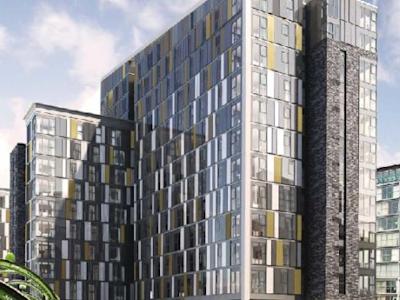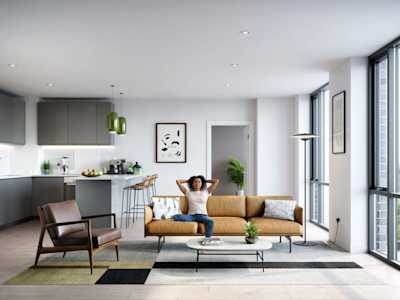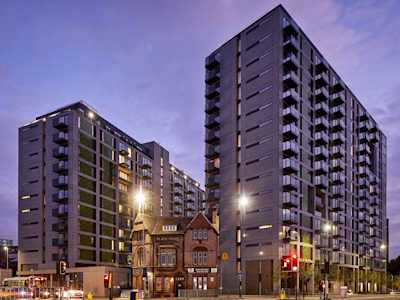Best areas to buy in Manchester
Best areas to invest in property in Manchester
What makes Manchester a good place to buy property?
Over recent years, Manchester has experienced vast amounts of regeneration that has increased its appeal amongst young professionals across the UK. Coupled with the number of businesses that have set up offices in the city, it is no wonder that young professionals have moved and the demand for property has soared.
According to Cushman and Wakefield, over the last seven years property prices in Manchester have increased by a staggering 34%, which is 4% above the national average. Whilst that’s already impressive, prices are forecasted to increase even further. Over the next five years, prices are expected to increase by 17.1% - the highest of any UK city - as supply struggles to keep up with demand. These figures are promising if you are aiming to buy in Manchester with the intention of achieving capital growth. Read on to find out which factors drive property prices in Manchester, and where you should consider investing to achieve your financial goals.
- Manchester’s Growing Population
- Manchester’s Affordability
- Manchester’s Flourishing Business Sector
- Which places should you consider buying property in Manchester?
Manchester’s Growing Population
More people are making the move to Manchester from London. The number of people moving from London to the Midlands or the North has tripled over the last ten years, and latest figures suggest that 10,200 people left London for Manchester. People are not just making the move from London to Manchester, but from everywhere in the UK and beyond to Manchester. According to the 2011 census, Manchester is the third fastest growing area in the UK with the greatest percentage of growth outside of London.
Start your property journey...
Manchester’s Affordability
There are many reasons why people are making the move. Average weekly wages are indeed lower, according to Centre for Cities, the average weekly wage in London is £751.40, compared to £525.60 in Manchester. However, living costs are modest in Manchester vs. London. According to home.co.uk, average rents in London are a staggering £2,788 pcm, compared to £1,141 pcm in Manchester. Wages are not as dissimilar, so it is understandable that people would want to live somewhere with lower living costs, where they have a bit of extra money in their pocket at the end of the month. Regeneration and business relocation also mean that people often have access to the same jobs, especially in broadcasting and technology, where Manchester was voted the best city to work in.
Manchester’s Flourishing Business Sector
In recent years, Manchester has welcomed national and international businesses. Google, Amazon, and Microsoft have all opened offices in the city. Just outside in Greater Manchester, the MediaCityUK business park in Salford Quays is now home to broadcasting companies such as ITV Granada and the BBC.
The relocation of businesses to Manchester might seem insignificant to a property investor, until you discover the knock-on effects. Young professionals chasing employment opportunities will need accommodation in the city, which will impact the demand for rental properties. This allows investors to achieve high rents and when the time is right to sell the property on, capital uplift.
Which places should you consider buying property in Manchester?
Manchester is a diverse city, offering many different neighbourhoods with different characters. Whilst the Northern Quarter is renowned for its bohemian, artistic vibe, Salford in Greater Manchester is characterised by modern high-rise apartment blocks and polished streets. Where you invest in Manchester will depend on the type of tenant you want to attract. With regards to property investment, some areas are more promising than others. Regeneration in some areas has impacted property prices so much that they have hit a ceiling, with little scope for improvement. Other neighbourhoods do not hit the criteria for property investment, whether it is because their location in relation to the city centre is not appealing enough, or there is no regeneration in the pipeline. Here are some places we think you should consider if you want to buy property in Manchester.
Start your property journey...
M14 post code
Covering Fallowfield, Moss Side and Rusholme, property investment in Manchester’s M14 post code offers some of the highest yields in the country. Average property prices stand at £194,733 and rents average £1,636, meaning that up to a 10% rental yield can be achieved.
M14 borders the main University of Manchester campus, which means lots of students choose to live in the area. Regeneration and an influx of students usually goes together. About £400m of private and public money has been poured into Moss Side to improve housing. Former Manchester City F.C. Maine Road site is also undergoing redevelopment as houses, shared ownership flats, a primary school and healthcare centre.
Salford
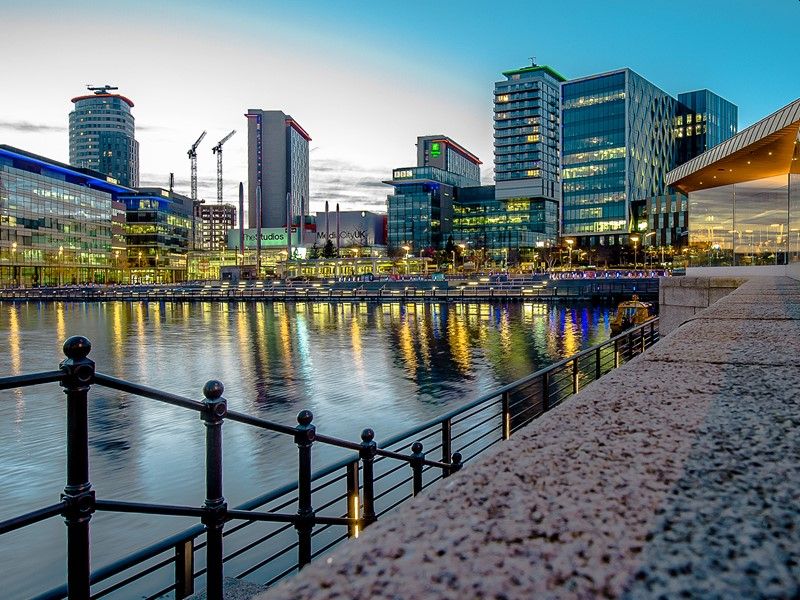
Salford located to the West of Manchester’s city centre, which is just a five-minute walk away. Not only does it occupy a convenient location, it has also undergone a huge amount of regeneration that has attracted national corporations. MediaCityUK is based in Salford Quays. It is a 200-acre mixed-use development that is home to the BBC, ITV Grenada, and the University of Salford’s media teaching department. There has already been significant house price growth in Salford Quays since the redevelopment of MediaCityUK started in 2007.
With such high-profile tenants, it is understandable that young professionals want to live in the area close to work. In fact, outside of the city of Manchester it experienced the second biggest increase in population locally. Between 1991 and 2019 the population grew by 12.1%. Prices are still modest with an average of £194,478, although that was up 13% since 2019 according to Rightmove.
Salford is bridging the gap between Salford Quays and Manchester City-centre. The main artillery Road is Chapel Street, which has seen quite a bit of development over the years as the apartment being built were tenanted by a fair number of students as it is near Salford University.
In recent times, The Green Quarter has catered more toward young professionals with developments like The Crescent which has large communal areas and even a swimming pool. Purchase prices start from £219,000 for a one-bedroom apartment and one could achieve rental income of between £905 - £1,900. This is the equivalent of a rental yield of between 5.8% to 6.9%.
Regent Road
Still in Salford and just minutes from Manchester’s city centre is Regent Road. Regent Road acts as a main transitionary route between the city of Manchester and Salford. Developers are starting to take advantage of its ideal location and excellent transport links. New developments on the road include Carnaby Place, a luxury residential development that aims to encapsulate city centre living. Features will include a gymnasium, a concierge service and secure residential parking. Another development in progress is Regent Plaza. Regent Plaza will consist of 525-apartments split over four blocks. The development of Regent Plaza is tipped to “change the skyline” and will include podium level gardens, a resident’s lounge, and gym.
St John’s
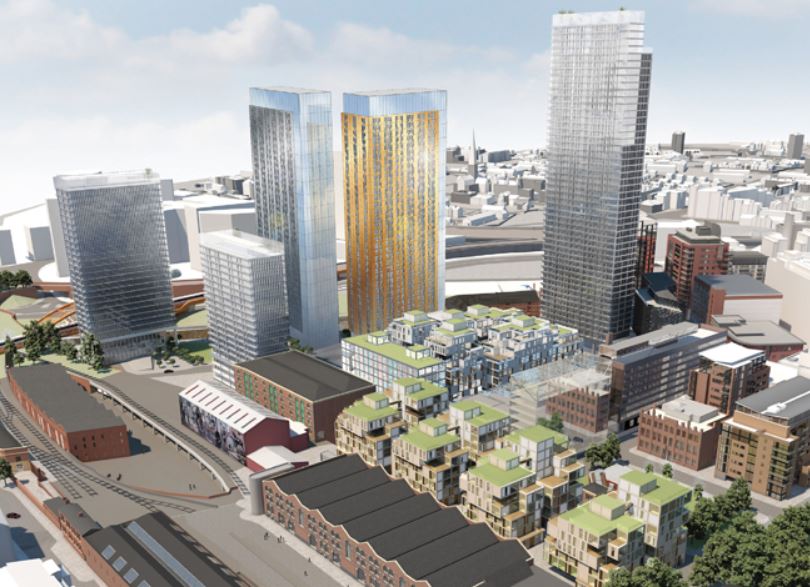
Led by Allied London, the old Granada Studios site will be redeveloped into a mixed-use space. Situated by the River Irwell, it occupies a good central London by Spinningfields. St. John’s focusses on Enterprise, Culture and Living. It will aim to bring around more workspaces, creative hubs, and residential developments. Focal points of the St. John’s development include Factory – a new cultural arts venue, Manchester Goods Yard – a workspace building aiming to attract Britain’s most creative businesses, and Nickel & Dime, a new two-tower residential development where tenants can manage their living space through technology. The development of St. John’s will attract new creative residents looking for residence that matched their lifestyle.
Along the River Irwell just outside of the St Johns area is a new development called Downtown. Downtown is a “hotel-style” residential development comprising 368 one, two, and three-bedroom apartments. Unique features of Downtown include hot and cold storerooms to keep supermarket deliveries, a postal room, and a business centre.
Downtown will comprise six towers, ranging in height from 4 storeys to 14. One-bedroom apartments start from £146,297 and a yield of up to 7% is achievable.
Start your property journey...
Northern Quarter
Located centrally between Piccadilly and Ancoats, the Northern Quarter is considered Manchester’s “bohemian” hotspot. In recent years it has experienced vast regeneration and is home to music venues and craft beer pubs.
NOMA is an £800m mixed use development in the Northern Quarter that opened in 2013. It is the largest development project in the North West, ahead of Salford’s MediaCityUK. Its focus was to regenerate the northern part of the city that had been overlooked in the past. NOMA consists of several components. One is the development of Hotel Indigo, a 14-storey, £26 million ciricular hotel on Corporation Street. Other aspects to NOMA include Hanover Building, a Grade II listed building to be renovated into retail and business space, re-purposing Federation House to host digital businesses, and a new public square.
The Press is a residential development just a 5-minute walk from the NOMA development. The Press is a conversion of a Grade II listed building which was a former printing room. The unique features contribute to its appeal. Each apartment within the development will feature 18th Century details, completed by understated modern fixtures and fittings.
The Press will comprise 66 one, two, and three-bedroom townhouses. Prices start from £196,000 on a 250-year leasehold. Depending on the size of the apartment purchased and number of bedrooms, monthly rental income between £1100 - £2,300 can be achieved, the equivalent of a 5% - 6.5% rental yield.
Castlefield
Castlefield is another area that over the past 20-30 years has experienced significant regeneration. It is a former industrial area and offers attractive period style housing and canal side property. Castlefield has been redeveloped into an exciting mix of waterside apartments, restaurants, and high-tech industries. In 2019, plans were put forward to demolish the remaining dilapidated flats and replace them with 188 new homes. Play space, parks and open spaces will also be included within the plans.
Property prices in Castlefield are on the more expensive side compared to other areas we have mentioned. The average price is £252,136, but it is up 15% on the previous year according to Rightmove. Castlefield has experienced some of the most regeneration in Manchester, and more is in the pipeline. Attractive housing combined with an attractive location will ensure property is always in demand in the area, especially if buyers are working for the tech industries in the area and are on higher salaries. Combined with further regeneration plans, prices are only more likely to increase, especially if they are presented to the target market.
Manchester has undergone a significant amount of regeneration and there is still more in the pipeline. Although property in some pockets of the city have shot up in recent years, there is still opportunity to be had if investors choose areas still undergoing regeneration or property close to regeneration zones. Property near the NOMA and St. John’s development will benefit from capital uplift, and prices in Salford are still low enough that significant gains can be achieved after further development.
Castlefield has proven itself to be one of the most desirable areas to live in Manchester when considering property price increases, and as it now accommodates high-tech industries, more employees on above-average wages will be looking to live there. Combined with continued regeneration, we predict prices will only increase.
Regent Road is a main artillery road that until recently has been overlooked for regeneration. It is likely benefitting from the overspill of Salford and surrounding areas. With its ideal location and the promise of Regent Plaza changing the skyline, it will only become a more desirable place to live.
M14 has some of the lowest average property prices on our list, but the rental yields to be achieved are phenomenal. Being so close to the University of Manchester, we predict rental yields are buoyed by student demand. This could be an area to consider if you are looking to invest in student property in Manchester.
Manchester is one of the UK’s most exciting cities and more people are recognising its appeal. It is one of the fastest growing places in the UK which lends itself to property investment as there will be consistent demand. If you are convinced that you want to invest in a buy-to-let in Manchester, contact one of our investment consultants who will be able to assist you with your property search.
If you are still not sure whether Manchester is for you, download our buy to let investment guide to learn more about what you should look for in a buy to let property, or read our best places to invest in property 2021 guide to discover other places we think are worth considering.
Start your property journey...
Recommended Properties
Related Articles
Are you curious?
Speak with an experienced consultant who will help identify suitable properties that will capture the exciting fundamental mentioned here.
WANT TO LEARN MORE ABOUT PROPERTY INVESTMENT?
SIGN UP TO OUR NEWSLETTER NOW!
